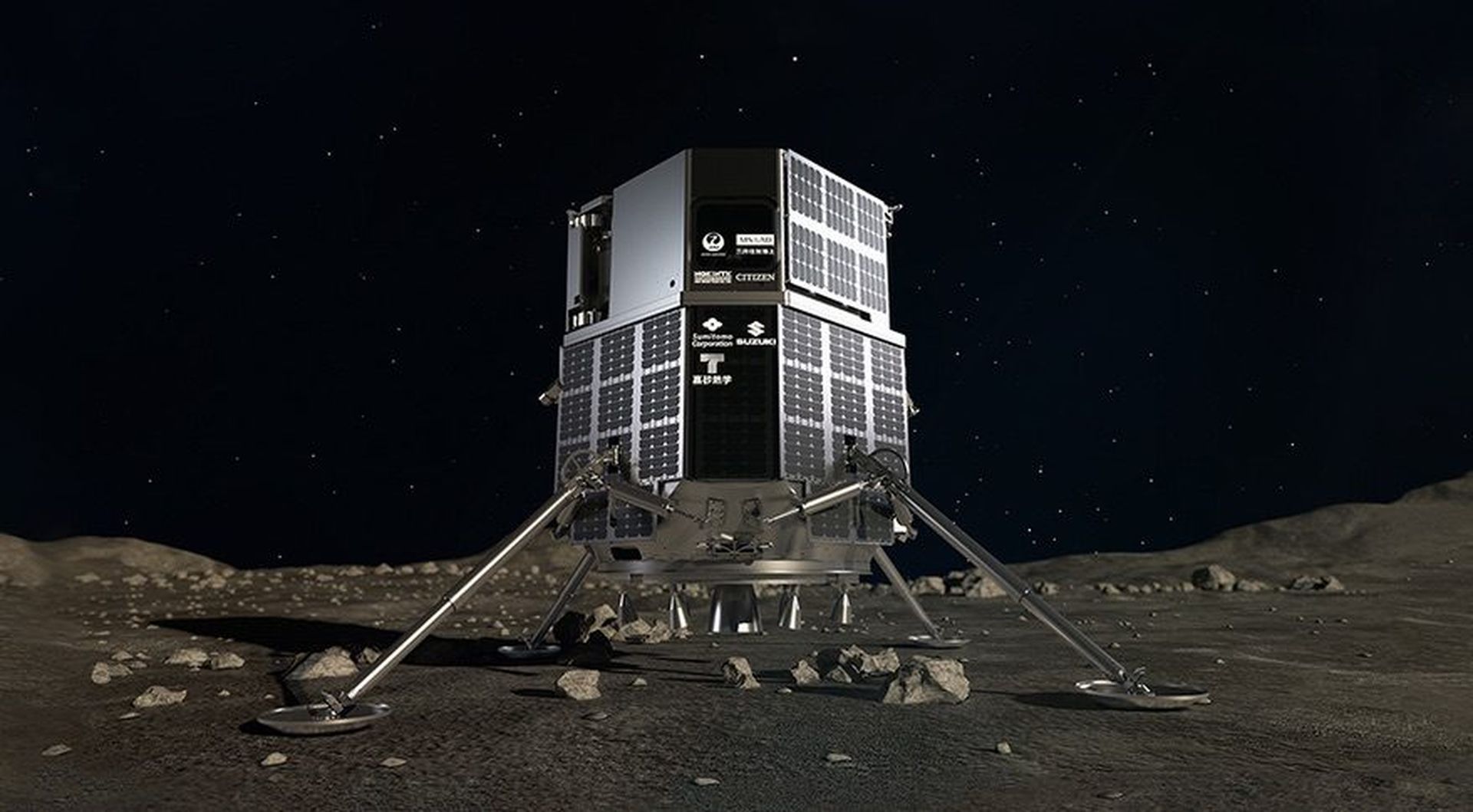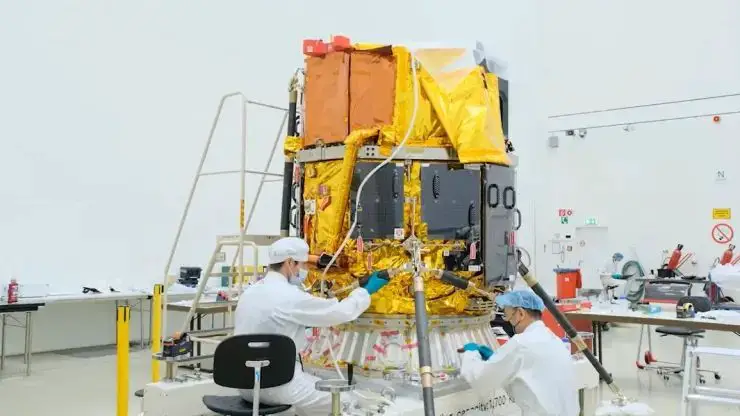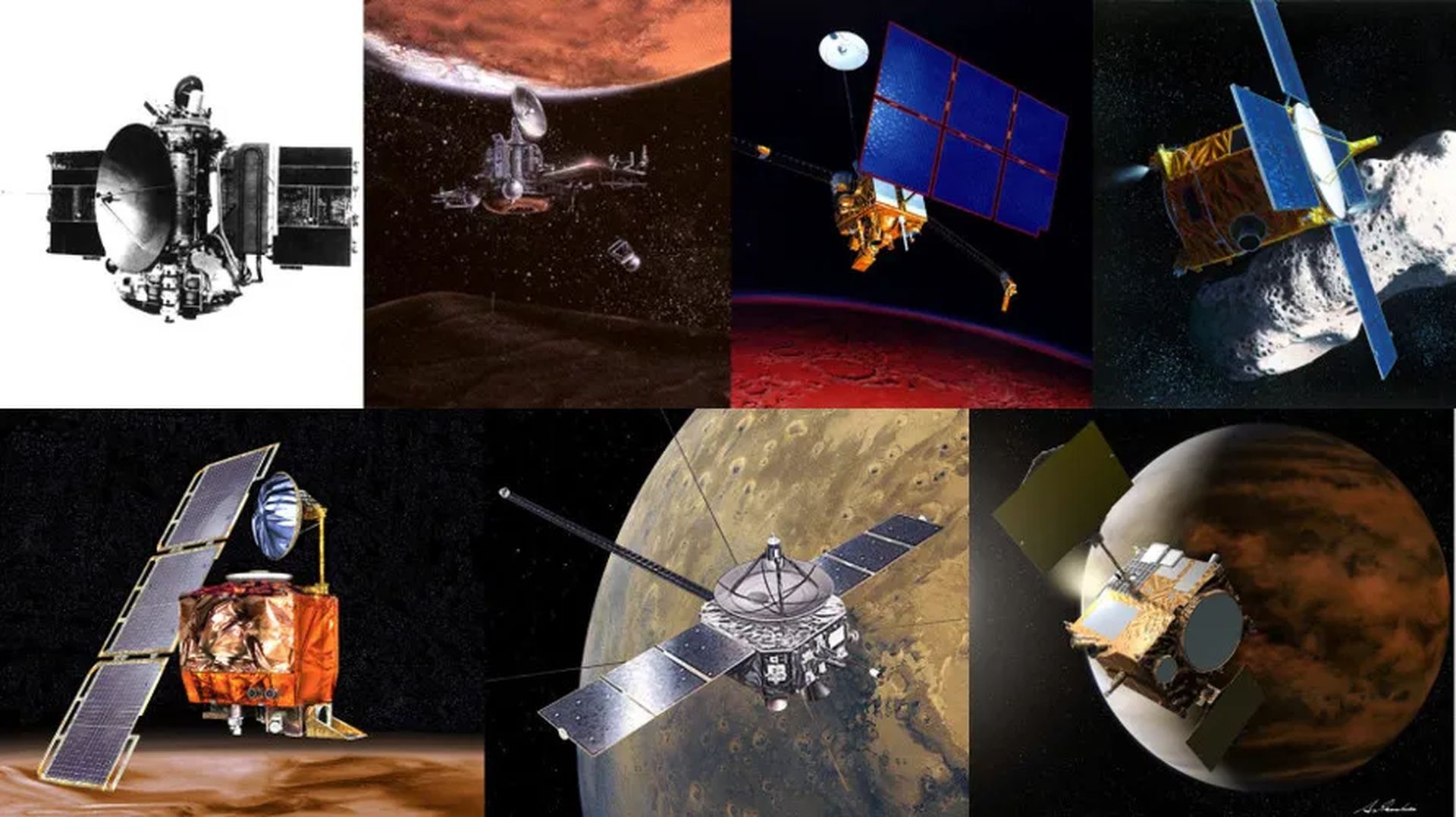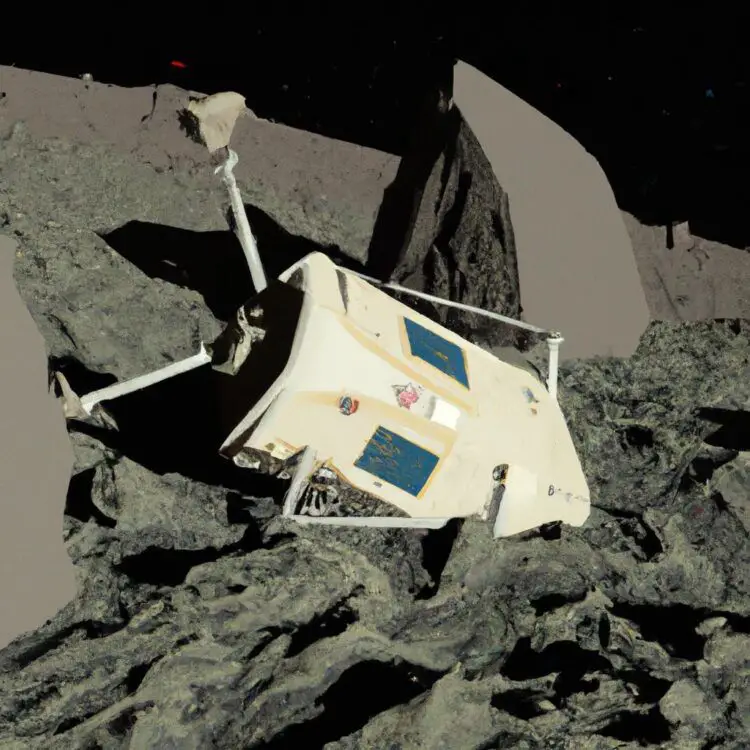Japanese moonlander is thought to have perished in space. Here is the summary of the news:
- The commercial lunar lander “Hakuto-R” is assumed to have perished in space, striking a severe blow to commercial space exploration’s future.
- The spacecraft’s loss calls into question the profitability of commercial space ventures and highlights the limitations and risks of space exploration.
- The incident emphasizes the importance of improved teamwork, openness, and responsibility in the space sector in order to avoid similar losses in the future.

In a tragic setback for the space industry, the commercial lunar lander “Hakuto-R” is presumed to be lost in space. The spacecraft was a joint project between Japan and the United Arab Emirates (UAE), and was intended to be a groundbreaking attempt to land on the Moon, paving the way for future commercial space exploration.
The Japanese moonlander was launched in early April, riding on a SpaceX Falcon Heavy rocket. Equipped with advanced technology, the lunar lander was designed to explore the lunar surface in innovative ways.
However, just a few days after entering lunar orbit, the spacecraft stopped communicating with Earth. Despite multiple attempts to reestablish contact, there have been no signs of life from the spacecraft. Experts have suggested that the lander may have crashed on the lunar surface or gone off course, never to be seen again.

photocredit: ispace
Loss of Japanese moonlander could affect whole space industry
The loss of the “Hakuto-R” is a significant blow to the space industry, particularly to the future of commercial space exploration. The mission was seen as a crucial step towards developing a sustainable lunar economy, and its failure raises important questions about the viability of such ventures.
Moreover, the loss is a major setback for the UAE’s space ambitions, which have been rapidly expanding in recent years. The country had launched its first astronaut into space in 2019, and had plans to establish a Mars colony by 2117. The failure of the “Hakuto-R” mission underscores the risks and challenges of space exploration and may lead to a reevaluation of these ambitious plans.
As investigations into the failure of the mission continue, questions are being raised about the role of private companies in space exploration. SpaceX, which launched the “Hakuto-R” lander, is one of several private companies that have been contracted to carry out missions for government agencies. However, the company’s track record has been mixed, with notable successes such as the launch of the Crew Dragon spacecraft but also several high-profile failures.
This incident also highlights the need for better collaboration between countries and companies involved in space exploration. The “Hakuto-R” mission was a joint project between Japan and the UAE, and while it had the potential to yield groundbreaking results, it ultimately fell short of its objectives.
Finally, the suspected loss of the Japanese moonlander “Hakuto-R” serves as a grim reminder of the hurdles and hazards associated with space travel. It is also a warning about the industry’s needs.
Here are some notable unsuccessful space missions that occurred in the past 10 years:

- Beresheet lunar lander (2019) – The Israeli spacecraft crashed on the lunar surface due to a malfunction in its main engine during its descent.
- Mars Climate Orbiter (2018) – The NASA spacecraft was lost due to a miscalculation in the conversion of units from English to metric, causing the spacecraft to burn up in the Martian atmosphere.
- Schiaparelli Mars lander (2016) – The European Space Agency’s lander crashed on Mars due to a software error that caused the thrusters to shut off too soon.
- Fobos-Grunt Mars sample return mission (2011) – The Russian spacecraft failed to leave Earth’s orbit and crashed in the Pacific Ocean.
- Glory satellite (2011) – The NASA satellite failed to reach orbit due to a launch vehicle malfunction.
- X-37B Orbital Test Vehicle (2010) – The U.S. Air Force spacecraft’s mission was cut short due to an issue with the spacecraft’s guidance system.
- Lunar Reconnaissance Orbiter and LCROSS impactor (2009) – The NASA spacecraft successfully entered lunar orbit, but the impactor failed to deliver its intended data due to a malfunction in its telemetry system.
- Phobos-1 Mars mission (2009) – The Russian spacecraft failed due to a computer malfunction just days before its planned arrival at Mars.
- Chandrayaan-1 lunar orbiter (2008) – The Indian spacecraft lost contact with Earth after completing over 3,000 orbits around the Moon.
- Herschel space observatory (2009) – The European Space Agency’s observatory ran out of coolant, ending its mission prematurely.
You can read an alternative expended content about failed space mission from here. Also as you know NASA plans to destroy the international space station on 2013. If you want to learn more, you could check our news article about the subject.
It’s worth noting that despite these setbacks, space exploration continues to push forward, and many successful missions have been achieved in the past decade as well.
The loss of the “Hakuto-R” moonlander serves as a reminder that the problems of space exploration are enormous, and we must continue to collaborate to overcome them. Collaboration, openness, and accountability will be critical to assuring the success and sustainability of future missions as private corporations increasingly participate in space exploration. We can continue to push the boundaries of human knowledge and achievement in the wide expanse of space by learning from our failures and aiming for greater success in the future.





